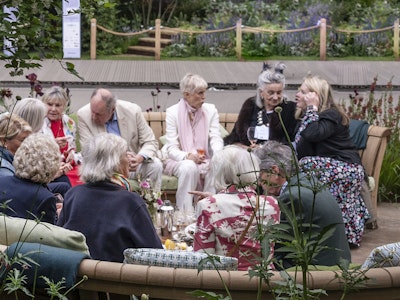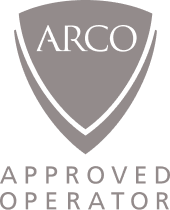What is Sheltered Housing? Retirement Living Alternatives

In this guide, we explain what sheltered housing is, who it’s designed for, and how it works. We’ve also included information about Auriens, a very different approach to later living - for those exploring different options for age-restricted housing.
Here’s what we’ll cover:
- What is sheltered housing?
- Who is entitled to sheltered housing?
- How does sheltered housing work?
- Pros and potential drawbacks of sheltered housing
What is Sheltered Housing?
Sheltered housing is a type of accommodation designed for older individuals who are mostly independent but who would benefit from living in a safer, more supported environment. Residents usually live in private flats or bungalows within a building or complex that includes communal areas, like a lounge or garden, and an on-site warden.
While services vary between sheltered housing facilities, most include a 24-hour emergency call system, a manager or warden, and access to shared lounges or gardens. Unlike residential care homes, sheltered housing does not provide regular hands-on care. Instead, it offers reassurance and support that can make a big difference to everyday comfort and peace of mind.
Properties are usually designed with accessibility in mind, featuring step-free access, grab rails, and wide doorways. Many schemes are designed to foster a sense of community while allowing residents the privacy and autonomy of their own homes.
Who is Entitled to Sheltered Housing?
Sheltered housing is most often intended for individuals aged 55 or above who can live independently, but are looking for a living situation that’s more secure or easier to manage. This type of housing is well-suited to those who live alone or feel isolated, and who would benefit from being part of a supportive community.
Eligibility for council or housing association schemes may depend on factors like age, health, income, and local housing policy. Some schemes prioritise individuals with mobility issues, those who are downsizing from social housing, or those with limited family support. Private sheltered housing schemes are available without eligibility restrictions, though often come with associated purchase or rental costs.
In practice, many people choose sheltered housing because they want to make life easier, safer, and more sociable as they age.
How Does Sheltered Housing Work?
Residents usually have their own front door and live independently, with optional access to shared amenities such as lounges, gardens, laundry facilities, and sometimes a communal dining area. A manager or warden may be on-site during the day, and an emergency alarm system is available 24/7.
Some schemes also host regular social events like coffee mornings, clubs, or exercise classes, with the view to keeping residents active and connected. There’s no obligation to take part, but many find that these shared experiences to be an enjoyable and valuable part of their new routine.
Sheltered housing is provided through three main routes:
- Council-run schemes which are often more affordable but may involve a waiting list and eligibility criteria
- Housing association schemes which are similar in nature but operated by non-profit providers.
- Private schemes which can be bought or rented outright and often include more luxurious facilities, concierge-style services, and modern interiors
While day-to-day care is not included, external carers or domestic help can often be arranged independently, adding flexibility for changing needs.
Pros of Sheltered Housing
Sheltered housing offers a great balance between independence and support. It’s ideal for those who want to continue living life on their own terms with the reassurance of help nearby.
Below are some of the key benefits that make sheltered housing an appealing choice.
Safety and Security
Most schemes include a 24/7 emergency call system, secure entry points, and daily check-ins for peace of mind. For those currently living alone, this safety net can be particularly reassuring.
Independence with Support
Residents live in their own homes, giving them autonomy while letting them benefit from support and a safer environment.
Social Opportunities
Shared lounges and organised activities offer the chance to connect with fellow residents and maintain an active social life: this helps to combat loneliness and isolation, which can be common in later life.
Low Maintenance Living
Maintenance, repairs, and external property management are typically handled by the housing provider, reducing everyday stress. Some schemes also include housekeeping or gardening services.
Accessibility
Properties are usually adapted for ease of movement, with lift access, wide doorways, level flooring, and features like walk-in showers and emergency pull cords.
Affordability
Compared to residential care or luxury retirement villages, sheltered housing can offer a more affordable way to maintain independence while enjoying added safety and community.
Peace of Mind for Families
Family members often feel reassured knowing their loved one is in a safe and sociable setting, with emergency support available if needed.
Cons of Sheltered Housing
While sheltered housing offers many advantages, it’s important to consider the potential downsides. Understanding these limitations can help ensure the right fit for your lifestyle, needs, and expectations.
Limited Care Options
Sheltered housing does not include personal or medical care. Those needing regular support must arrange it privately or consider a more supported setting such as assisted living or a care home.
Smaller Space
Flats are often compact, which may require downsizing from a larger property and adjusting to a simpler lifestyle. While many enjoy the change, it can be a challenging transition. Read our downsizing guide to better understand these challenges.
Resale and Letting Challenges
In some cases, selling or letting a sheltered property can be more complex than a standard home, particularly in shared-ownership or leasehold arrangements. Prospective residents should check the terms and conditions carefully before committing.
Limited On-Site Amenities
While some schemes offer lounges and gardens, most don’t have the facilities found in more premium developments. If access to a spa, fitness centre, or restaurant matters to you, this may not be the right fit.
Variability in Standards
Because sheltered housing is provided by a wide range of organisations, the quality, location, and atmosphere can vary significantly. It's important to visit in person and compare options.
How It Works at Auriens
Auriens is not a form of sheltered housing. It represents a completely distinct model of independent later living, created for individuals who value personalised service, and the freedom to shape each day as they choose.
Residents at our Chelsea residence live in private apartments at the heart of one of London’s most sought-after neighbourhoods, with access to world-class amenities including a spa, cinema, private gardens, and a restaurant. Discreet health and wellbeing support is available, but the day-to-day experience is built around comfort, independence, and cultural engagement. If you’re exploring your options for later-life living and want to maintain the independence you enjoy while stepping into something that feels exceptional, Auriens could be the place to begin your next chapter. You can find out how it works here, or get in touch to try before you buy if you feel we may be a good fit.
Find Us
2 Dovehouse Street
London, SW3 6BF
020 4549 8000
Auriens is a member of ARCO, which represents Integrated Retirement Communities in Great Britain. As an ‘Approved Operator’, Auriens aims to comply at all times with the requirements of the ARCO Consumer Code.






